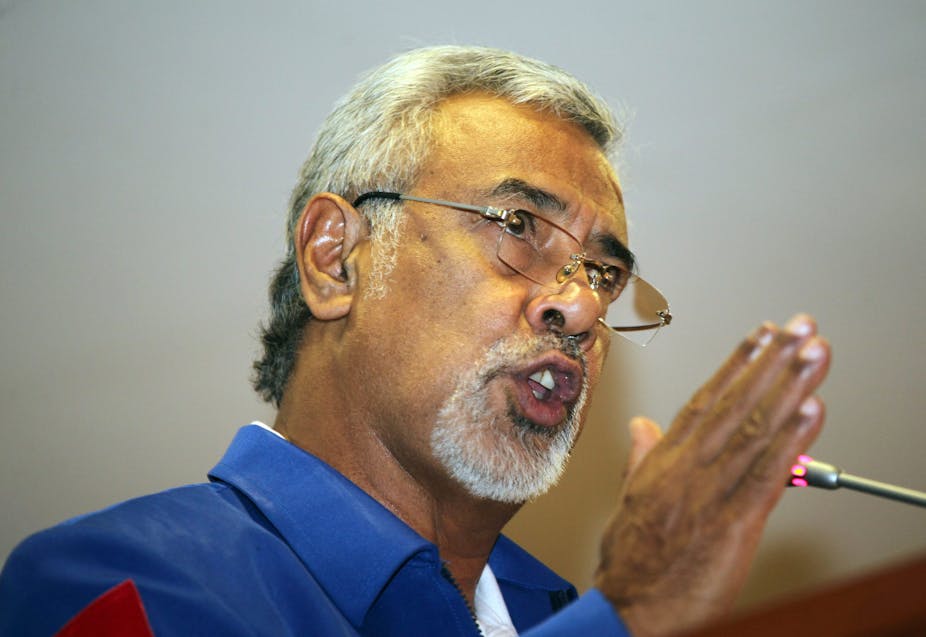Hopes and fears of an alliance between Timor-Leste’s two major political parties, CNRT (National Congress for Timorese Reconstruction) and FRETILIN (Revolutionary Front for an Independent East Timor), appear to have fallen away.
A special meeting of CRNT on Saturday discussed options for an alliance with other parties following the 7 July parliamentary election.
CNRT, with the largest single share of the vote although still well short of overall majority needed, seemed confident throughout last week that the decision on the shape of the future government would rest with it. While technically a third party, PD (Democratic Party), won a sufficient share of the vote to play kingmaker with either of the two major parties, this option gained little traction in Dili’s rumour mill.
Close but not close enough
Preliminary results from the election put only four parties above the 3% threshold required to secure a place in the parliament. Under Timor’s constitution, the president is guided by the parliament in his nomination of the prime minister. In effect, this means that the party or alliance of parties with a majority of seats determines who will be appointed.
Based on the preliminary results, CNRT expects 30 seats in the 65-member Parliament, trumping arch rival FRETILIN which has 25, while PD expects eight seats and a new party, Frente-Mudanca, two.
CNRT, led by outgoing Prime Minister Xanana Gusmao, massively improved its vote share over the previous election in 2007 (36.7% compared to 24.1% in 2007) and came much closer to the overall majority it hoped for.
But coming close is not enough, and CNRT must form an alliance with another party or parties to form government. PD, with an expected eight seats and already a coalition partner with CNRT in the outgoing government, is the obvious alliance candidate and reportedly held discussions with CNRT in the week before the election.

Outgoing President José Ramos Horta threw his weight behind PD in recent weeks as a counterweight to Gusmao in the wake of the political estrangement between the two men and, in the weeks before the election, was also publicly advocating a broad alliance government including FRETILIN.
With the results in, both Horta and the Catholic Bishop of Dili reportedly urged CNRT and FRETILIN to join forces in government, and FRETILIN was receptive. Others were less enthusiastic, with some sections of civil society warning of the dangers of a grand coalition that governs without the scrutiny of a parliamentary opposition.
Three roads to government
CNRT’s special meeting on Saturday seems to have put paid to any hopes that FRETILIN might be joining government.
Reportedly, CNRT president Xanana Gusmao made it plain to the meeting that a grand coalition including FRETILIN was not his preference, although he was looking for party consensus on its approach. Arguing that parliament needed a strong opposition, he reportedly put forward three options for the meeting to consider:
CNRT in alliance with FRETILIN,
CNRT in alliance with PD and Frente-Mudanca
CNRT sitting on the cross benches in opposition.
Unsurprisingly, it was announced after the meeting that the party had chosen the second option, to invite PD and Frente-Mudanca to join with it in a coalition government.
Party politics
A record 21 parties contested this election, seven more than in 2007. In the lead-up to Timor’s independence, the UN hailed the proliferation of political parties as a positive achievement. More recently, the multiplicity of parties has been seen as risking inherently weak coalitions. CNRT was only able to form government in 2007 in an alliance with three other parties.
While not unstable, the multi-party Council of Ministers was at times fractious and divided. Three years into the life of the government, Deputy Prime Minister Carrasalao from PSD resigned, denouncing the failings of the government, and Prime Minister Gusmao has been publicly critical of the competence of some of his ministers (attracting the obvious rejoinder from FRETILIN that as head of the Council of Ministers he should look to himself). It remains to be seen whether a coalition of three parties will be tighter in the next government.

Electoral casualties
A striking development with this election is the swathe that it has cut through many of Timor’s political parties. The biggest casualty is PSD, which won almost 16% of the vote in 2007 in coalition with ASTD. Now, it is out of the parliament.
ASTD, whose notable leader, Xavier do Amaral, died recently, is also out of the parliament this time round. A further casualty is UNDERTIM, led by the colourful Cornelio Gama (L7 in his days as a resistance leader), who in 2007 counted on sufficient support from veterans in the east to just get the party over the three percent hurdle.
A fourth casualty is PUN, a small party but one which made its presence felt in the parliament through the committee system. The final casualty is the three-party coalition of AD-KOTA-PPT which also just squeaked in to the last Parliament.
Voter turnout for the Parliamentary election was down on 2007: 74.8% compared with 80.5% the last time around.
Regional concentrations of party loyalty remained pronounced in this election, with FRETILIN’s support continuing strongest in the three easternmost districts where it eclipsed CNRT. Elsewhere, CNRT generally polled well ahead of FRETILIN, although in two of the western districts they were fairly evenly pegged.
An earlier version of this article was first published by the ANU College of Asia and the Pacific at the Australian National University.


